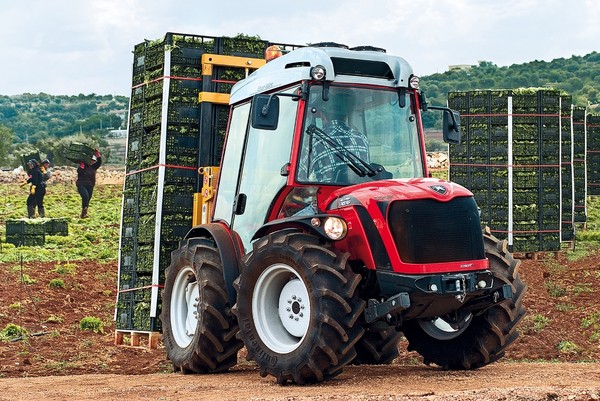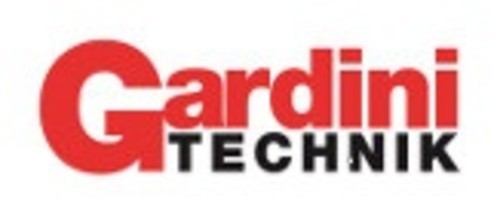
Articulated isodiametric tractors: small but powerful
A recent survey found Angers, Nantes and Limoges the three French cities with the most greenery as well as those dedicating the greatest resources for this purpose. In Italy, in the wake of positive results achieved abroad and shrinking financing due to the financial and economic crisis, differentiated maintenance is spreading in a number of municipalities. This means the adoption of a level of maintenance performed according to the type and function of the green area, the intensity of the use of the area and its location. A wide range of technologies are deployed, from mowers to leaf blowers
Specialist tractors for vineyards and orchards fit into a niche market which has taken on great importance over the years to now account for an estimate 20% of all tractors sold annually on the Italian market. In this sector there are four major Made in Italy manufacturers well known and greatly appreciated around the world – Antonio Carraro in Campodarsego near Padua; the Lombardy group BCS with headquarters in Abbiategrasso near Milan which produces isodiametric tractors under the Ferrari and Pasquali brand names in their plant in Luzzara near Reggio Emilia; the Emilia ARGO Group which for some time has marketed its Valpadana brand and now also the Landini brand; Goldoni in Migliarina di Carpi near Modena. Also up for mention in the category are the small Pierre Trattori in Silvano d’Orba near Alessandria and the German manufacturer MAX-Holder Gmbh, both capable of carving out space in this especially lively niche market.
These specialist tractors have a relatively short history dating back to the immediate postwar period when two wheel tractors were widespread on national territory. With the addition of special equipment, these machines were also put to use for transport on the road after a rear axle was mounted for wheels of the same size as the front wheels. Towards the beginning of the 1960s, manufacturers such as Pasquali started production of mini-tractors with four drive wheels, isodiameters with central articulated steering. This design was not, however, totally new in that Holder in Germany turned out their first tractor in 1954 and much further in the past the mythical Pavesi-Tolotti P4 was brought to the market in 1919.
The manufacturers of this type of tractor are especially active in a market for which they are continuously proposing new features. Above all, it must be noted that also in this sector there are remarkable leaps in the direction of high power obviously associated with increases in size and the mass of these machines, so much so that there are isodiametrics today which reach the threshold of weight at 2,200-2,300 kg for the big models, meaning that their overall size has grown somewhat over that of earlier models.
A look at the market with an eye on the numbers shows that over time the isodiametrics have moved into a slice of the market which, up to twenty years ago, was held by tracked tractors in that the two types share a number of characteristics. These include great maneuverability and stability in transit straight up the steepest slopes and in difficult climbs though they are disadvantaged when it comes to traction and stability when transversing slopes.
As stated above, these isodiametrics are built for a niche market within which there is a wide range of tractors with many important differences which share the features of four equal wheels as well as short wheelbases, offer reverse drive as standard equipment or an option and mount the engine over the front axle. This latter feature has a strong positive influence on the capability of the tractor to take on steep slopes by maintaining a large proportion of load on the front axle but also means the tractor is not suitable for high speed travel on the road, especially without implements mounted on the rear three-point hitch. This characteristic leads to the tendency of the tractor to pitch fairly strongly and lift the rear axle in hard braking. Another peculiar feature of these tractors is a reversible driving system on a rotating turret to invert the driving direction in just a few seconds which is almost always offered as an interesting option.
Yet another feature sought in these specialist tractors is their great agility in maneuvers made possible by their short wheelbase which allows them to make turns between rows in extremely limited space. However, on the down side is the fact that they are not very suitable for such heavy duty work as plowing or subsoiling. This is the reason why these small isodiametric tractors are almost always marketed with rear lifts without power control as standard equipment which is usually available as an option on higher category tractors. Another feature of this type of tractor is their compact scale and an excellent power to weight ration which reduces their compaction of the soil.
Important differences among the various models of specialist isodiametric tractors is based on their type of steering. Some can, in effect, turn in on themselves because of their articulated chassis which provides an extremely tight turning radius allowing the rear wheels to pass exactly over the track of the front wheels but on these the ergonomics for the driver for steering is sacrificed and the tractor’s stability is lessened during maneuvers on slopes. Steering with only the front axle confers greater stability when climbing the steepest gradient of a slope but considerably limits the turning radius so there are BCS, as well as Pasquali, Ferrari and Pierre models, which offer tractors equipped for both modes providing extremely limited turning ratios. An interesting feature offered by Pierre makes it possible to exclude at will articulated steering to improve stability on slopes. The BCS Group markets the Dualsteer system which is activated at the steering wheel for proportional control of the engagement of the two modes which operate simultaneously on the hydraulic circuit and the struts and rods system to act on both wheels; the hydraulics on the steering circuit of the central articulation and the wheels while the strut coupling ensures synchronization and the progression of the action.
In any case, the use of the articulated chassis is a solution which gives these tractors considerable advantages, especially in operations on terrain without steep slopes where there is no problem of stability raised by transversing sloping ground. With this construction design, as stated above, in turning the rear axle passes over the exact same track left by the front axle to achieve a very tight turning angle. The only drawback with this type of chassis is that articulation requires tubing for driving the hydraulic oil under pressure to the rear of the tractor and this invariably involves wear of the tubing against the bodywork in turning and this requires the manufacturers to recommend periodic replacement of this connection.
The fact remains that with the perfection of technical solutions, their placement and the materials used for building them, the time required for replacing them periodically has dropped from thousands of hours to hundreds and does not pose any great problem.
Most of the design solutions call for the constructive of two semi-chassis, one front and one rear, within in which runs the cardan transmission shaft. The two semi-chassis are then coupled with a central joint which often allows the axes a degree of lateral oscillation for adapting the profile of the machine to the ground.








